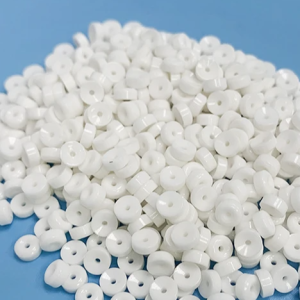Discover Premium Ceramic Products | Durability & Elegance United | Advanced Ceramics
PRODUCT PARAMETERS
Description
Overview of Zirconium Dioxide Ceramics
Zirconium Dioxide Ceramics, known for their toughness and ability to withstand extreme temperatures, are widely used in medical, automotive, and industrial applications due to their unique properties.
Features of Zirconium Dioxide Ceramics
Exceptional fracture toughness
High thermal expansion
Excellent resistance to wear and corrosion
Biocompatibility for medical implants
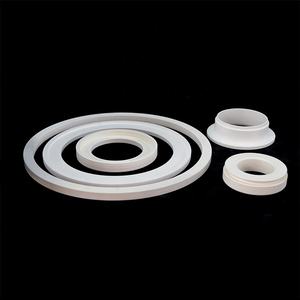
(Ceramic Sensor Stabilized Zirconium Oxide Zirconia Tube Oxygen Probe As Analyzer for Oxygen Measurement)
Specifications of Ceramic Sensor Stabilized Zirconium Oxide Zirconia Tube Oxygen Probe As Analyzer for Oxygen Measurement
The Ceramic Sensor Stabilized Zirconium Oxide Zirconia Tube Oxygen Probe serves as a precise analyzer for measuring oxygen levels in industrial and scientific settings. The probe uses a zirconia ceramic sensor stabilized with yttria. This material ensures stable performance in high-temperature environments. The zirconia tube acts as a solid electrolyte. It generates a voltage signal based on the oxygen concentration difference between the sample gas and reference air. This voltage is measured to determine oxygen content accurately.
The probe operates effectively in temperatures up to 700°C. It withstands harsh conditions like corrosive gases or fluctuating pressures. The measurement range covers 0.1% to 25% oxygen concentration. Response time is fast, typically under 5 seconds. This makes it suitable for real-time monitoring.
Installation is straightforward. The probe integrates with existing systems through standard fittings. It works with analyzers or control units via analog or digital outputs. Calibration is simple. A reference gas adjusts the sensor periodically. Maintenance is minimal. The zirconia tube’s durability ensures long service life.
Key applications include combustion control in boilers, furnaces, and kilns. It monitors oxygen in metal heat treatment processes. It ensures safety in chemical production by detecting leaks. The probe is also used in environmental monitoring to track emissions.
The design includes a built-in heater. This maintains optimal sensor temperature in low-ambient conditions. Signal drift is reduced. Accuracy remains consistent over time. The outer sheath is stainless steel. This protects the sensor from physical damage.
Compatibility extends to multiple gas types. The probe handles inert gases, flue gases, and mixtures with moisture. Cross-sensitivity to other gases is low. Readings stay reliable. Users receive stable data for process optimization.
Power requirements are modest. The heater operates on 24V DC. Energy consumption stays low. Replacement parts are widely available. Downtime is minimized.
The zirconia oxygen probe meets industry standards for safety and performance. It is a cost-effective solution for continuous oxygen measurement. Reliability makes it a preferred choice across sectors.
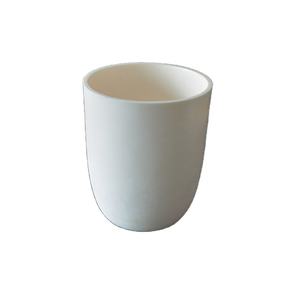
(Ceramic Sensor Stabilized Zirconium Oxide Zirconia Tube Oxygen Probe As Analyzer for Oxygen Measurement)
Applications of Ceramic Sensor Stabilized Zirconium Oxide Zirconia Tube Oxygen Probe As Analyzer for Oxygen Measurement
Ceramic sensor stabilized zirconium oxide zirconia tube oxygen probes measure oxygen levels in gases. These probes work in high-temperature settings. They use zirconia ceramic material. The material conducts oxygen ions when heated. A voltage forms between two sides of the probe. The voltage changes with oxygen concentration. This principle ensures precise measurements.
These probes suit industrial processes. They monitor oxygen in furnaces and boilers. Controlling combustion efficiency reduces fuel waste. Factories rely on accurate data to optimize operations. Automotive systems use these probes too. They check oxygen in exhaust gases. This helps engines meet emission standards. Medical devices like anesthesia machines depend on stable oxygen readings. Environmental sensors track air quality using similar technology.
The zirconia tube design handles harsh conditions. It resists corrosion and thermal shock. High temperatures do not damage the probe. Response times are fast. Readings update quickly for real-time adjustments. Maintenance needs are low. The probes last longer than other sensors. Costs drop over time due to durability.
Industries choose zirconia probes for reliability. Power plants monitor flue gases. Steel mills control furnace atmospheres. Chemical plants prevent unsafe oxygen levels. Waste treatment systems use probes to manage processes. The technology adapts to many settings.
Stabilized zirconia ensures stable performance. Temperature changes affect readings less. Calibration stays consistent. Measurements stay accurate over years. Users avoid frequent replacements. Safety improves with dependable data.
Regulations demand precise oxygen control. These probes help industries comply. Emission limits require strict monitoring. Medical standards need error-free results. Environmental laws push for cleaner air. Zirconia probes support these goals.
The probes integrate with analyzers and control systems. Data feeds into central monitors. Alerts trigger if levels go off target. Operators adjust processes immediately. Automation relies on steady sensor input.
Zirconia oxygen probes serve critical roles. They balance efficiency and safety. Their design meets diverse industrial needs. Performance stays reliable under stress.
Company Introduction
Advanced Ceramics founded on October 17, 2014, is a high-tech enterprise committed to the research and development, production, processing, sales and technical services of ceramic relative materials and products.. Since its establishment in 2014, the company has been committed to providing customers with the best products and services, and has become a leader in the industry through continuous technological innovation and strict quality management.
Our products includes but not limited to Silicon carbide ceramic products, Boron Carbide Ceramic Products, Boron Nitride Ceramic Products, Silicon Carbide Ceramic Products, Silicon Nitride Ceramic Products, Zirconium Dioxide Ceramic Products, Quartz Products, etc. Please feel free to contact us.(nanotrun@yahoo.com)

Payment Methods
T/T, Western Union, Paypal, Credit Card etc.
Shipment Methods
By air, by sea, by express, as customers request.

5 FAQs of Ceramic Sensor Stabilized Zirconium Oxide Zirconia Tube Oxygen Probe As Analyzer for Oxygen Measurement
What does the ceramic sensor stabilized zirconia tube oxygen probe do?
The probe measures oxygen levels in gases. It uses a zirconia ceramic element. This element creates a voltage based on oxygen concentration differences between the sample gas and reference air. The voltage signal gets converted to an oxygen reading.
Why does temperature affect the probe’s performance?
High temperatures change how the zirconia element works. The probe needs a certain temperature range for accurate readings. If the environment gets too hot or cold, measurements might drift. Some probes have built-in heaters to keep temperature stable.
How often should the probe be calibrated?
Calibration depends on use. Check it every few months for most applications. Calibrate more often if used in harsh conditions like high dust or corrosive gases. Follow the manufacturer’s guidelines. Regular calibration stops errors from building up over time.
What reduces the probe’s lifespan?
Exposure to extreme temperatures or chemical contaminants shortens lifespan. Particles in the gas can block the sensor. Physical damage from vibration or impact also causes issues. Clean the probe regularly. Avoid using it in environments beyond its rated specs.
Where is this oxygen probe commonly used?
It works in industries needing precise oxygen monitoring. Examples include combustion control in furnaces, emissions testing, and chemical processing. It’s also used in medical devices and safety systems to detect low oxygen levels.
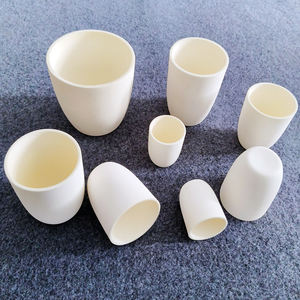
(Ceramic Sensor Stabilized Zirconium Oxide Zirconia Tube Oxygen Probe As Analyzer for Oxygen Measurement)
REQUEST A QUOTE
RELATED PRODUCTS
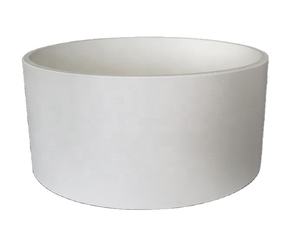
ZrO2 Zirconia Cageless All Ceramic Full Complement Balls Ceramic Bearing 6012 6013 6014 6015
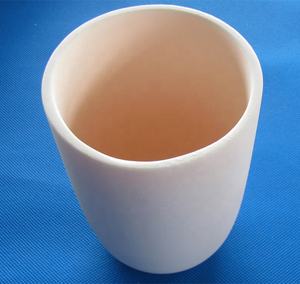
Good Wear Resistant Zirconium Oxide ZrO2 Zirconia Ceramic Component
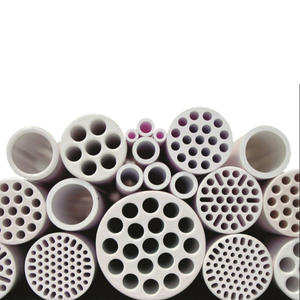
Customized High Precision Zirconia Ceramic Rod For Cutter Machine Using Wear And Corrosion And High Temperature Resistance
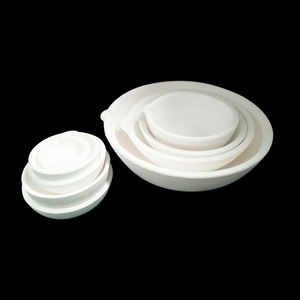
2200C High Temperature YSZ Zirconia Ceramic ZrO2 Crucible
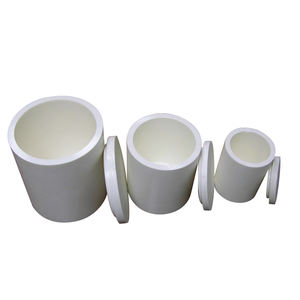
Zirconia Ceramic Guide Wheel, Precision Ceramic Parts, Rapid Prototyping Mechanical Zirconia Ceramic Sleeve Bushing O Seal Ring
